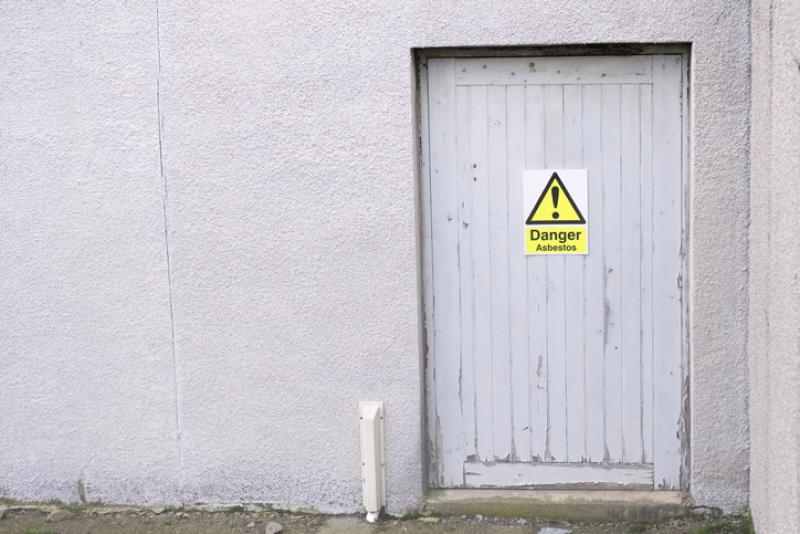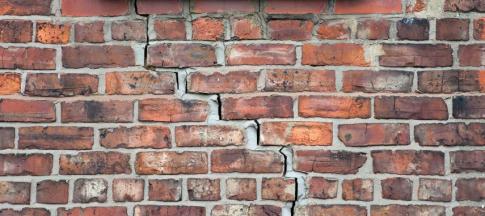
Asbestos is relatively widespread in buildings in the UK, and there’s a reasonable risk of it showing up in properties built pre-2000.
Although it's often benign and not harmful, it can be dangerous in certain circumstances and may need to be professionally removed.
What is asbestos?
Asbestos is a collective name for a set of six naturally occurring minerals, made up of certain microfibres which can be pulled into a fluffy material.
It was once used a lot in construction, in everything from insulation and walls to flooring and roofs.
It was often the building material of choice because of its resistance to fire, water and electricity. It's also good for absorbing sound, and was inexpensive.
There were three main types of asbestos used in construction:
- brown asbestos (amosite) - banned in 1985
- blue asbestos (crocidolite) - banned in 1985
- white asbestos (chrysotile) - banned in 1999
Why is asbestos dangerous?
Asbestos isn’t dangerous unless it’s damaged or disturbed. But it can be damaged by being broken, drilled into, scrubbed, sanded or even just by allowing it to deteriorate.
The brown and blue types pose the most risk.
If it’s damaged or disturbed, the tiny fibres can be easily breathed in. This can potentially cause cancer, and with enough exposure to it you could suffer from a range of medical issues related your lungs and breathing.
You may not see any of these symptoms until years after breathing in the asbestos.
Asbestos is now banned in the UK, but it may still be present in houses built as recently as 2000.
Could my home contain asbestos?
Any domestic building which was built or refurbished before the year 2000 could contain asbestos, as the sale of asbestos containing materials was banned in the UK in 1999.
It's difficult to identify potential asbestos just by looking at the material. If you think that a part of your home contains asbestos you should seek professional help.
The Health and Safety Executive(HSE) has produced an interactive diagram which shows where asbestos may be found.
As a guide:
- homes built during the 1990s – there is a potential of white asbestos being in the home.
- homes built during the 1980s – there is a greater potential of asbestos being in the home including white and brown asbestos.
- homes built before the 1980s – there is the greatest potential of asbestos being in the home including white, brown and blue asbestos.
Can I carry out DIY if my home has asbestos?
If you think that your home has some asbestos materials, it's often best to leave them where they are, especially if they're in good condition and unlikely to get damaged.
Check the condition of the materials from time to time to make sure they haven't been damaged or started to deteriorate.
If you intend to do building work that may disturb materials that you think could contain asbestos, such as textured coatings, you should have an asbestos survey done.
Do not try and repair or remove it yourself.
Get advice from an environmental health officer at your local authority or council. They'll be able to recommend asbestos specialists to do some tests.
If they do find asbestos, they should be able to recommend a company to help remove and dispose of it safely.
Does home insurance cover asbestos removal?
Most insurance policies are unlikely to cover asbestos removal, unless it's required as part of a valid claim, so it tends to fall to the homeowner to sort it.
It varies between insurers and different policies.
In the case of our buildings insurance, it includes rebuilding, repairing or replacing parts of the buildings damaged by the causes covered under the policy.
This could potentially include parts consisting of asbestos, among other building materials.
If a claim is made involving potential asbestos damage, we choose a specialist licensed expert to test the damaged area and authorise, where needed, the removal of any damaged asbestos.
This could mean sealing off the affected area, or even in some cases arranging alternative accommodation for the occupants until the area is cleared.
Bear in mind we don’t cover the removal of asbestos unless it’s been damaged by a cause covered under the policy, for example wear and tear isn’t covered.
What should I do if my ceiling collapses that has textured coating (Artex)?
If your ceiling has collapsed, you should:
- leave the debris alone
- stop people or pets entering the room
- do not sweep up or vacuum up the debris caused by the ceiling collapse
If you're insured with us, get in touch with our claims team, who'll be able to let you know what to do next.
What can I do about asbestos when buying a home?
If you’re in the market for a new home, the best thing you can do is check for asbestos when viewing the property before committing to buy.
This can be tricky, as it’s usually not immediately visible. It may be present in insulation, partition walls or ceiling tiles in otherwise standard houses with brick walls and tiled roofs.
That said, if a surveyor thinks that the building contains asbestos, it should be in their report. They'll report it as asbestos-containing materials (ACMs).
Asbestos doesn’t have to be the end of the world, and tends to be safe if it isn’t damaged or disturbed. So, it’s not necessarily a red flag if you’re buying a property.
But it’s worth getting a quote for removal from an accredited professional who’s licensed to dispose of it properly. Whatever you do, don’t try to remove it yourself.
What can I do about asbestos if I'm selling a home?
Likewise, as a seller, if you become aware of asbestos, the usual advice is not to remove it unless it’s damaged.
But you might choose to get it removed if you decide that it may make the property more desirable. This isn't usually cheap, but may be worthwhile.
Again, make sure to talk to a trained professional if you go down this route.


